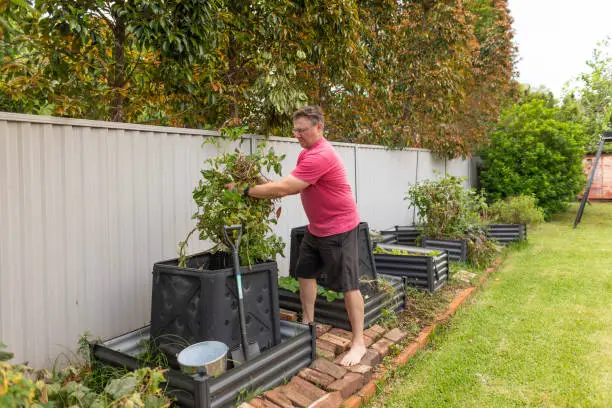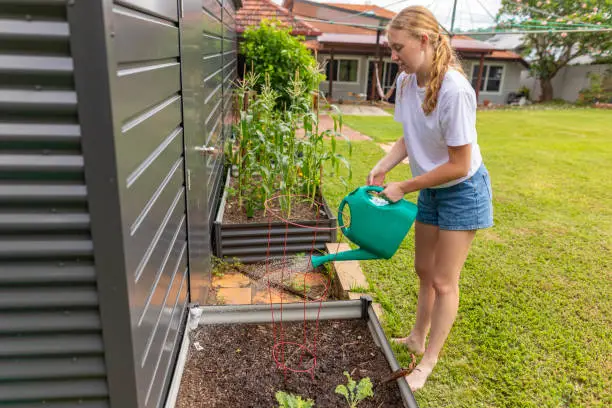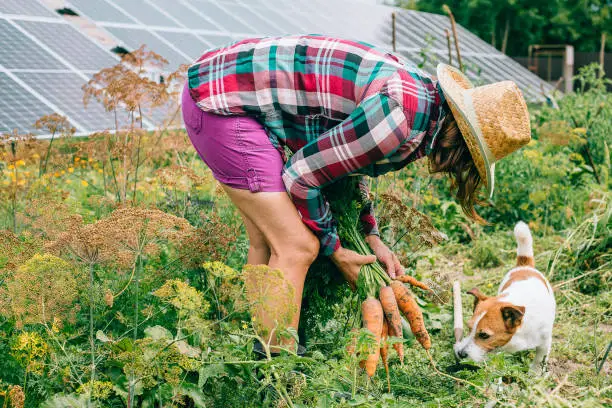DIY Mobile Chicken Tractors: Revolutionizing Backyard Homesteading
Our backyard homesteading has been revolutionized with DIY mobile chicken tractors. “What on earth is a chicken tractor?” Imagine a mobile chicken home that moves across your yard, giving your chickens fresh pasture while they clean up pests and fertilize. This time, you kill two birds with one stone—happy birds and a healthy garden.

We found the idea intimidating at first. The experience of creating and utilizing a chicken tractor has been thrilling. We wanted our chickens to feel free to peck, scratch, and forage outside while being safe from predators and the environment. We decided to build a chicken tractor then.
A plan was needed first. Size, mobility, and accessibility were brainstormed on paper. The concept was a sturdy, lightweight structure we could move around the yard. A simple A-frame made of lightweight PVC pipes and chicken wire was used. PVC pipes are lightweight and manageable. Chopping and assembling them felt like playing with gigantic Lego blocks!
Next was the floor—or lack thereof. Chicken tractors are appealing because they have no floor and direct ground access. This design lets our chickens scratch and peck actual earth for bugs, seeds, and other natural treasures. They have a diversified diet from a daily buffet, which is good for their health and enjoyment.
We also considered sleeping quarters. Chickens require a warm place to roost and lay eggs. We added a small, elevated nesting box and roosting bar to our tractor. These sections needed to be accessible for cleaning and egg collection. Awaking to fresh eggs is one of those simple thrills that never gets old.
Mobility was crucial. We wanted the tractor to move without back strain, so the answer was wheels. Adding wheels to one end could lift the other and wheel the tractor about the yard—like a wheelbarrow. We give the chickens a different patch of grass to explore daily to ensure fresh feed and thorough yard fertilization. Look at that efficiency!
This is the elephant in the room—predators. Our yard isn’t a fortress, so fearing unwanted guests kept us up at night. Secure latches, strengthened wire, and a sturdy frame protected our tractor from predators. Like telling predators, “Not on my watch!”
Using our chicken tractor has been fun and educational. Watching our chicks enthusiastically rummage through fresh grass every day is extremely pleasant. We feel we’re providing them the best of both worlds—coop safety and outside freedom. Plus, our garden looks better than ever. The tractor’s new locations have cleaner soil, fewer bugs, and better grass growth.
Looking back, making a DIY mobile chicken tractor was one of our most rewarding tasks. It’s strengthened our bond with nature and birds. It also reinforces life’s cycle, sustainability, and backyard homesteading. Whether you’re an experienced homesteader or just starting, try a chicken tractor. It may change your chicken-keeping style, as it did for us.
Making Fort Knox for Goats and Sheep: A Homesteader’s Guide to Foolproof Fencing
After diving into backyard homesteading, we discovered that raising goats and sheep would be like living in a sitcom with unexpected twists and turns and lots of fun. These animals are like animal Houdinis—they’ll find a way out. Creating a secure fencing system was like creating Fort Knox—an epic quest.
You may think, “It’s just a fence; how complicated can it be?” It’s more than just installing posts and wires. No, sir. It involves building a psychological, physical, and escape-proof barrier. You must comprehend these four-legged escape artists’ psychology and outwit them at every turn.
First, we had to think like goats. Imagine being agile and curious and seeing the greener grass on the opposite side. That fence? It’s a challenge, not a barrier. With that in mind, we couldn’t proceed randomly. We needed a firm, foolproof plan.
Height came first. A goat can jump, and sheep, though more cautious, can. Animals regard a 4-foot fence as a hurdle, not a barrier. We went tall—very tall. We standardized on 6-foot fences. Some call it “overkill,” but we say, “Just enough kill.”
Height alone isn’t enough. These cunning creatures will check every fence section for weakness, pushing and shoving to uncover one. That’s why we choose durable materials. Deep-rooted wooden poles and heavy-duty wire mesh can withstand the most determined goat.
What about that wire mesh? Goats like to poke their heads through fences. Like social media, they always want to be on the other side. We ensured our mesh was tight enough to keep heads out and predators out—trim, 4-inch squares.
We honored fencing’s unsung heroes and corner posts. We braced them like our life depended on it because they did. The lives of our goats and sheep did. Deeply anchored and fortified, they guard our enclosure’s corners.
Electricity is the finale of our fencing story. It is a modest shock to deter fence testing. It is not harsh but clear—”this far and no further.” The barrier is psychological as well as physical. It is a tease, but it speaks volumes.
Gates are any enclosure’s Achilles’ heel. Ours was robust like the fence, with latches that would baffle a puzzle master. Goats are smart. They’ll figure it out if you can open it easily. Our latches require opposable thumbs, which goats lack.
Remember the ground. Some goats and lambs think they’re miners digging for freedom. To combat this, we buried the bottom of our fence a foot deep, making our enclosure a fortress from below and above.
We’ve had doubts, difficulties, and errors along the way. Escapes, exciting chases, and on-the-spot learning occurred. Each escape attempt was a chance to learn and grow. We learned to think like goats, predict their moves, and stay ahead.
Making secure fences for our goats and sheep was more than a project—it was a labor of love and a sign of our dedication to their safety. We gave kids space to play, have fun, and keep safe under our care.
We advise homesteaders starting this fencing journey to be patient and watchful. You may build a goat-proof fence until they discover a new trick. That is a story for another day.






Leave a Reply